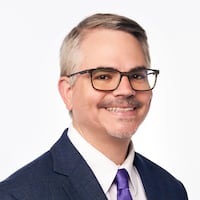Metro Atlanta cityhood votes
Sandy Springs (2005) … 94%
Milton (2006) … 86%
Johns Creek (2006) … 84%
Chattahoochee Hills (2007) … 84%
South Fulton (2007) … 15%
Dunwoody (2008) … 81%
Peachtree Corners (2011) … 57%
Brookhaven (2012) … 55%
Tucker (2015) … 74%
LaVista Hills (2015) … 49.5%
South Fulton (2016) … 59%
Stonecrest (2016) … 59%
Source: County Election Offices
This time, it’s the southside creating new cities, with the hope that they’ll bring the same prosperity to residents that other young municipalities across metro Atlanta have.
On Election Day, voters approved the cities of South Fulton and Stonecrest, bringing a combined 150,000 people within their borders. They'll become the ninth and 10th cities formed in the region since Sandy Springs launched the incorporation trend in 2005. The formation will mean even more government bodies that will need to communicate and coordinate about the region's future.
Like cities that came before, supporters of South Fulton and Stonecrest say they want more control of their tax money and government. They believe incorporation will bring more business growth and better services than county governments could provide.
South Fulton will cover about 100,000 people outside of Atlanta, fully incorporating most of the remaining parts of Fulton County. Stonecrest will have a population of 50,000 people in southeast DeKalb near I-20 and Stonecrest Mall.
The cityhood effort started in more affluent northside areas like Sandy Springs, Johns Creek and Dunwoody after Republicans took control of the Georgia General Assembly following elections in 2004.
Now the movement has spread to overwhelmingly Democratic regions that want to try their hand at self-government.
“It’s our turn now. It’s our opportunity to focus on our area and make it thrive,” said Jason Lary, president of Stonecrest Yes. “There’s no advantage of being unincorporated.”
Both cities will have majority black populations — more than 95 percent in Stonecrest and 90 percent in South Fulton — that can use their local governments to decide how to shape their futures, Lary said.
Rep. Roger Bruce, D-Atlanta, said he sees the formation of South Fulton as a way to develop “a great city that happens to have a lot of black people in it.” Like the northside cities, Bruce said southside residents want to speak cohesively, and control their own destinies.
“If you have enough folks, you get a voice,” he said. “You get heard.”
These cities won’t have the same economic advantages from the start as most other fledgling municipalities. Median incomes are lower in South Fulton and Stonecrest than in most nearby cities.
But advocates for the cities say tax revenue isn’t an obstacle. Instead, they see opportunity.
They’ll begin with small governments and then attempt to attract businesses, improve quality of life and raise household incomes.
“By forming a city, we can have a voice and develop the area and make it a true live, work and play community,” said Corey Brown, a Stonecrest resident after casting his ballot for the city Tuesday.
Damita Chatman, who lives in South Fulton, said she voted for the new city because she wants someone to be accountable for what happens in her area.
“If I don’t want a Family Dollar store in my area, who am I going to call to rally for this?” she asked. “I think it’s going to be wonderful. Having a mayor, a council, I welcome that.”
For James Reese, Jr., the impetus was a chance to control funds residents have been sending to Fulton County for a decade to pay for police, fire and other services in a special service district.
Neither of the new cities plans to charge more in property taxes than residents currently pay, but their city councils will have the power to do so.
Metro Atlanta is already crowded, with more than 70 cities in its core 10-county area. Adding more municipalities will require deeper coordination on issues like traffic, regional planning and storm preparation.
Those hurdles can be overcome, said Al Outland, director of Urban Affairs for the Georgia Municipal Association. For example, city leaders in Atlanta and Fulton County’s other cities supported three transportation sales taxes, including one for MARTA, that voters also backed on Election Day.
“Simply because we create new cities doesn’t mean that we are breaking things into unmanageable parts,” Outland said. “The important thing is that we communicate. How can we pull together and make it happen?”
Fulton County Chairman John Eaves said he thought it was inevitable that the southside would form its own city at some point.
“To me, it adds to the diverse tapestry of the county,” he said.
In Stonecrest, the primary motivation to become a city is economic development. The future city, which will hold its first elections March 21, will be able to market itself to businesses, offer tax breaks to recruit them and manage zoning rules.
The area hasn’t received the attention it needed from DeKalb County in recent years, said Plez Joyner, a board member of Stonecrest Yes.
It lacked representation after its former county commissioner, Lee May, was appointed by Gov. Nathan Deal to become DeKalb CEO in July 2013. The seat wasn’t filled until Commissioner Mereda Davis Johnson was elected in July 2015.
“We can really turn this around and start bringing some businesses and jobs in our area,” Joyner said. “We’re an untapped resource.”
Keep Reading
The Latest
Featured



